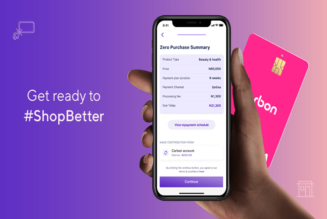Work-from-anywhere (WFA) model have greatly expanded in South Africa in recent weeks, as loadshedding forces remote workers to seek power from a multitude of sources, in malls and coffee shops, meaning they may be alternating between mobile phones, tablets and laptops across any number of potentially unsecured public Wi-Fi hotspots.
This mobility increases the cyber security risks presented by all these devices that are often poorly secured to begin with.
Smartphones, in particular, have become a critical part of the remote workforce toolkit. They are such an integral part of each person’s daily routine, people may regard them as trusted and safe.
As a channel to your personal data, banking and accounts, and a link to your work and business data, smartphones drive cyber criminals directly to your pocket. As such, they may become the next big vector to hijack and weaponize in distributing attacks.
Mobile cybersecurity threats mostly align with the common threats, including phishing and malware but they can also include mobile-specific issues such as application-based threats and device and OS-based exploits.
Verizon’s Mobile Security Index 2021 found that while 71% of enterprises see mobile devices as critical to their business, 40% also see them as their company’s biggest security risk and 53% said the consequences they faced as a result of a mobile device-related security compromise were major.
Moreover, the survey found that 93% of Android devices were running an out-of-date version of the OS, and 49% of workers allowed their family or friends to use their work devices.
Securing mobile devices
As an endpoint in the corporate network, the mobile device needs to be secured with strong PINs, passwords and even biometric logins such as facial recognition and fingerprint scanners. Multi-factor authentication is an authentication method that protects individuals and organizations by requiring users to provide two or more authentication factors to access an application, account, or virtual private network (VPN).
This adds extra layers of security to combat more sophisticated cyberattacks even after credentials or identities have been stolen, exposed, or sold by third parties.
And as a key part of the work-from-anywhere (WFA) strategy, mobile devices also need to be protected within a Zero Trust model, which stipulates that trust should be explicitly derived from a mix of identity and context-based aspects.
Further, zero trust network access (ZTNA) provides per-user access to specific applications, far surpassing implicit trust when it comes to security. Every device, user, and application can be seen and controlled regardless of where they are connecting from. Implementing a zero trust model provided by ZTNA ensures that whenever a user or device requests access to a resource, they are verified before access is given.
By Doros Hadjizenonos, Regional Director Southern Africa, Fortinet.









Tagged: cybersecurity, Cybersecurity Africa, Cybersecurity in Africa, Cybersecurity news, IT News, latest tech news, Load Shedding, Load Shedding South Africa, Load-shedding News, Load-shedding schedule, Security, Southern Africa, tech news, tech news africa, technology news